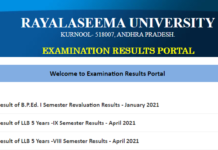The legal dissolution of marital ties, commonly known as divorce, is a multifaceted process in India. With six distinct stages, it involves the filing of a divorce petition and culminates in the declaration of the final order. The divorce process in India is governed by diverse laws based on religion, leading to two primary procedures: mutual consent divorce and contested divorce.
Mutual Consent Divorce:
- Filing the Petition: A peaceful separation is sought when both partners mutually agree, initiating the process through a joint divorce petition.
- Six-Month Cooling-off Period: Following the petition, a six-month period allows for potential reconciliation.
- Final Hearing: If reconciliation doesn’t occur within six months, a final hearing takes place, resulting in the issuance of a divorce decree.
Also Check: Lesser Known Pros and Cons of Getting Married
Contested Divorce:
- Filing a Divorce Petition: One spouse initiates the divorce by filing a petition, presenting necessary documents and evidence.
- Delivery of Summons: The court issues summons notifying the other party about the divorce proceedings.
- Response: The summoned party must appear in court; failure to do so may lead to an ex parte decision by the judge.
- Trial: Both parties present evidence and arguments during the trial, with witnesses supporting their claims.
- Interim Order: A request for temporary orders related to child custody or maintenance can be filed during the proceedings.
- Final Order: The court issues a final decision based on evidence, arguments, and witness testimonies. An appeal option is available if either party is dissatisfied.
Must Check: 6 Strategies to Deal with an Angry Partner as a Female
Procedure for Filing a Contested Divorce in India:
- Filing a Divorce Petition: Initiate the process by filing a petition with the relevant family court, supported by necessary documents.
- Delivery of Summons: The court issues summons, officially informing the other party about the divorce proceedings.
- Response: The summoned party must appear in court on the specified date; non-compliance may result in an ex parte decision.
- Trial: Both parties present evidence and arguments during the trial, with witnesses supporting their claims.
- Interim Order: A party can request interim orders related to child custody or maintenance during the proceedings.
- Final Order: The court issues a final decision, concluding the divorce process. An appeal option is available.
Procedure for Filing Mutual Consent Divorce in India:
- Preparation of Petition: Create a joint petition explaining the mutual agreement for divorce and reasons behind the decision.
- Filing of Petition: Jointly file the petition before the Family Court through respective legal counsel.
- Review and Recording: The court reviews the petition and supporting documents, issuing an order for recording the recorded affidavit.
- Cooling-off Period: A six-month cooling-off period is granted for potential reconciliation.
- Final Hearing: If reconciliation doesn’t occur within six months, both parties attend the court for the final hearing.
- Divorce Decree: Following the final hearing, the court issues a divorce decree officially dissolving the marriage.
Understanding the intricacies of the divorce process in India is crucial, and seeking legal guidance is highly recommended for a smooth and informed journey through these legal procedures.














